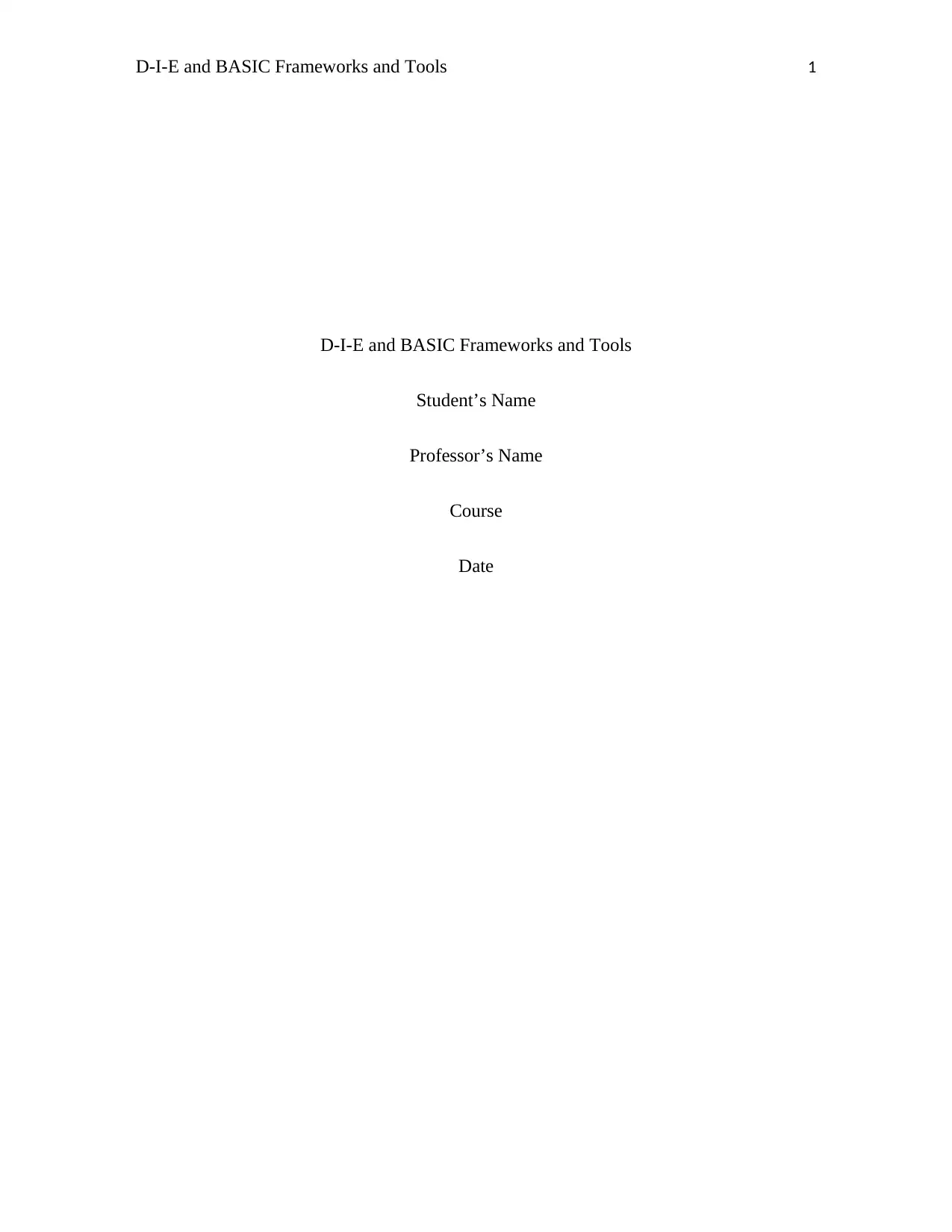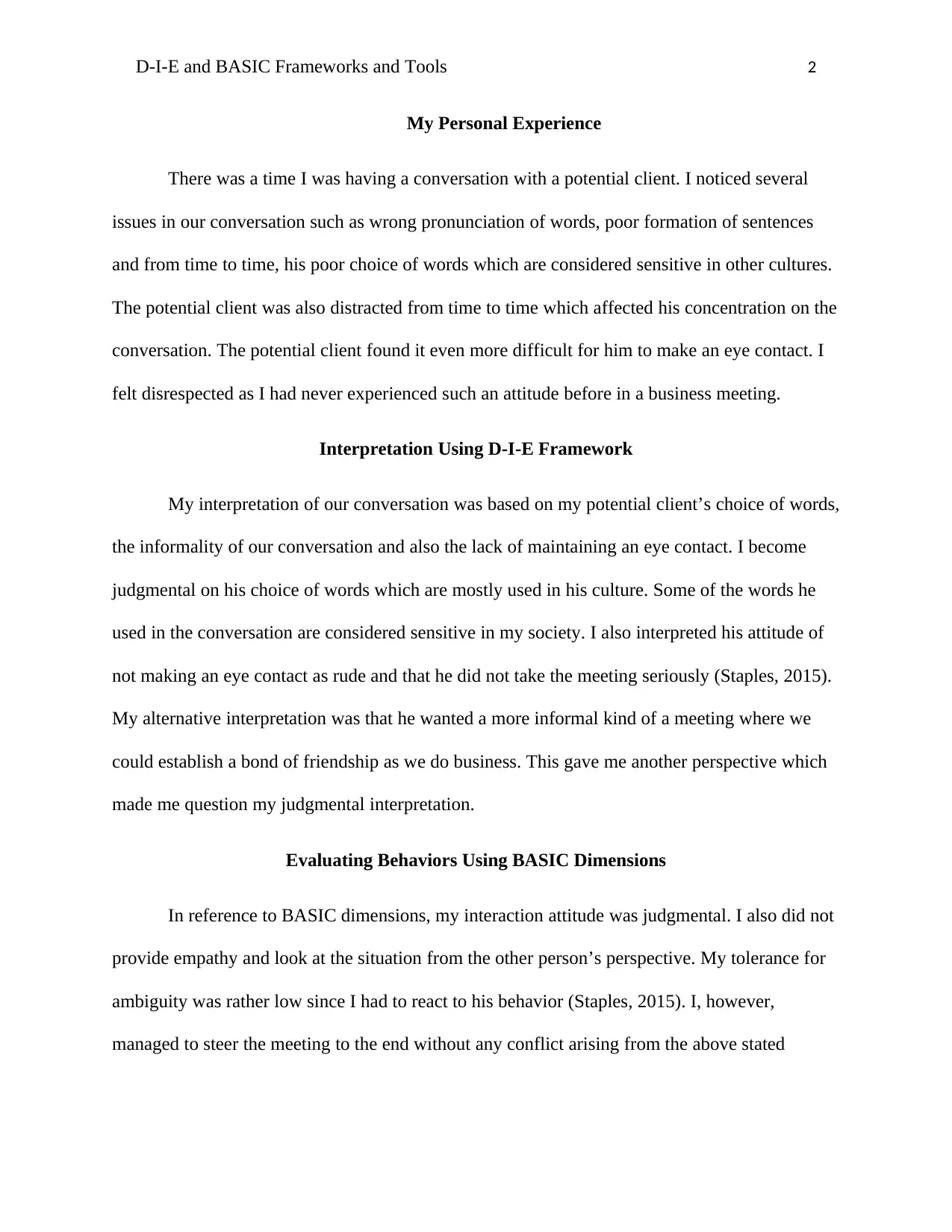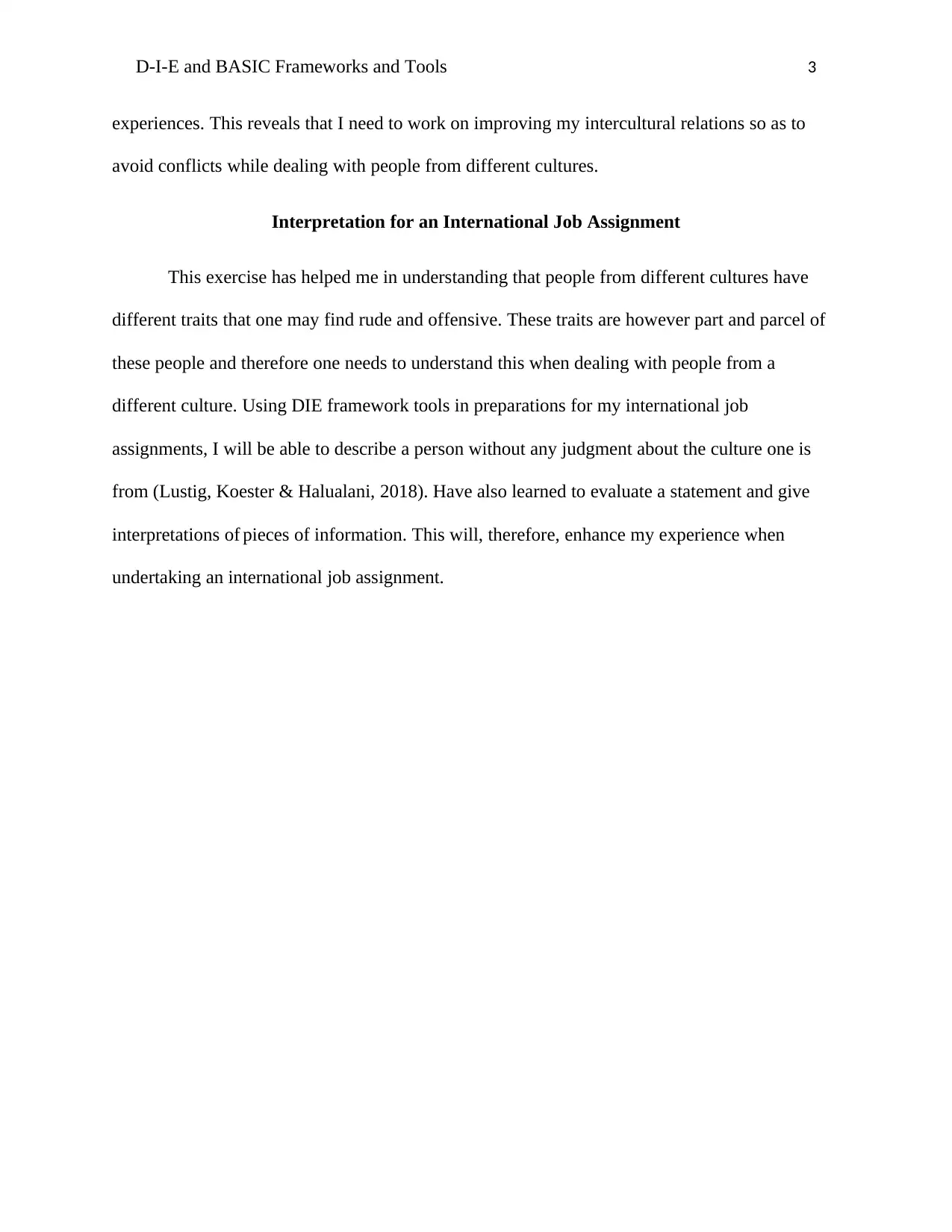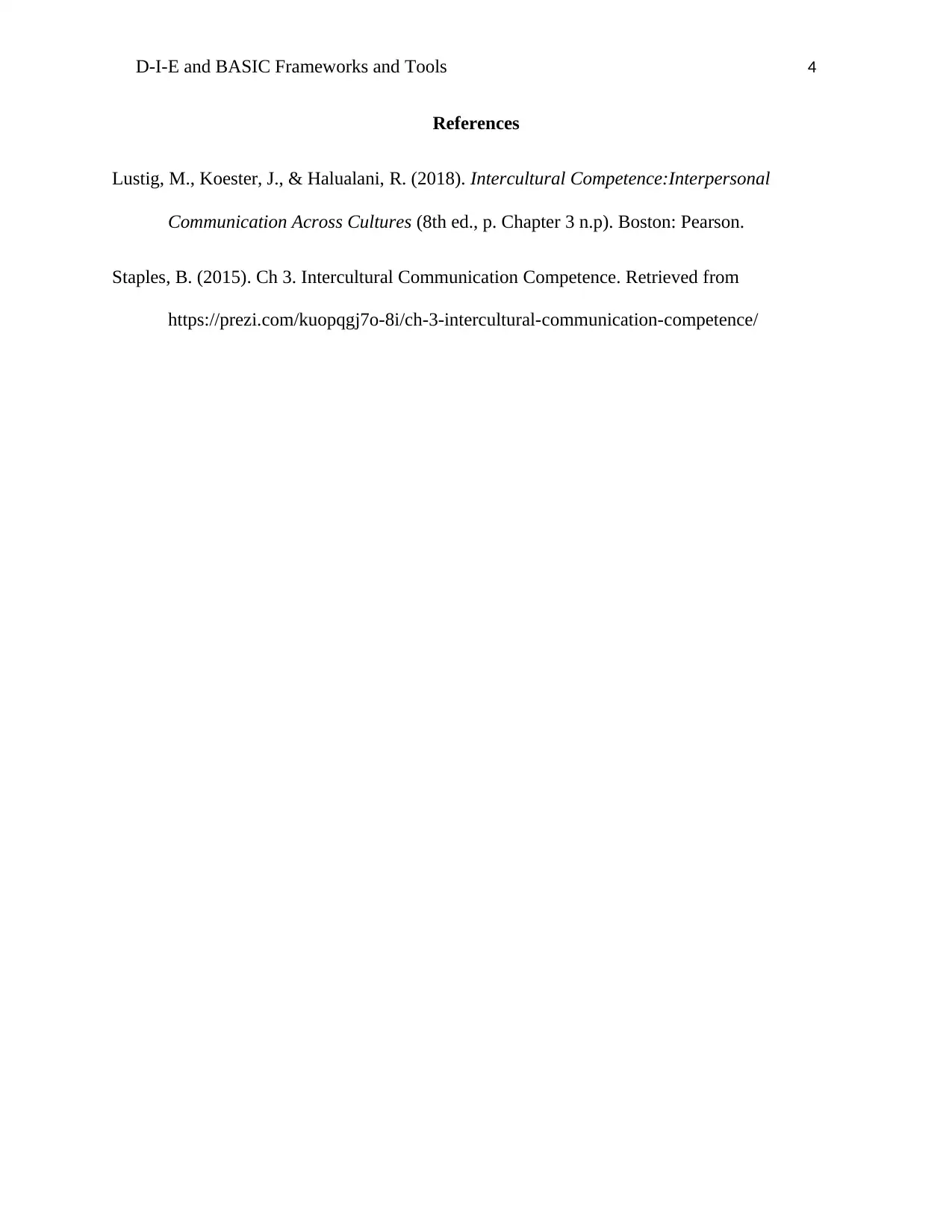D-I-E and BASIC Frameworks: Enhancing Intercultural Communication
VerifiedAdded on 2023/06/04
|4
|571
|198
Essay
AI Summary
This essay explores the application of the D-I-E (Description, Interpretation, Evaluation) and BASIC (Behavioral Assessment Scale for Intercultural Competence) frameworks in analyzing intercultural interactions. The author reflects on a personal experience with a potential client, interpreting the client's behavior through the D-I-E framework, considering alternative interpretations, and evaluating their own behavior using the BASIC dimensions. The analysis reveals the author's initial judgmental attitude and low tolerance for ambiguity, highlighting the need for improved intercultural relations. The essay concludes with insights gained on cultural differences and the importance of using the D-I-E framework to avoid judgment and enhance understanding in international job assignments, emphasizing the value of evaluating statements and information objectively.
1 out of 4







![[object Object]](/_next/static/media/star-bottom.7253800d.svg)